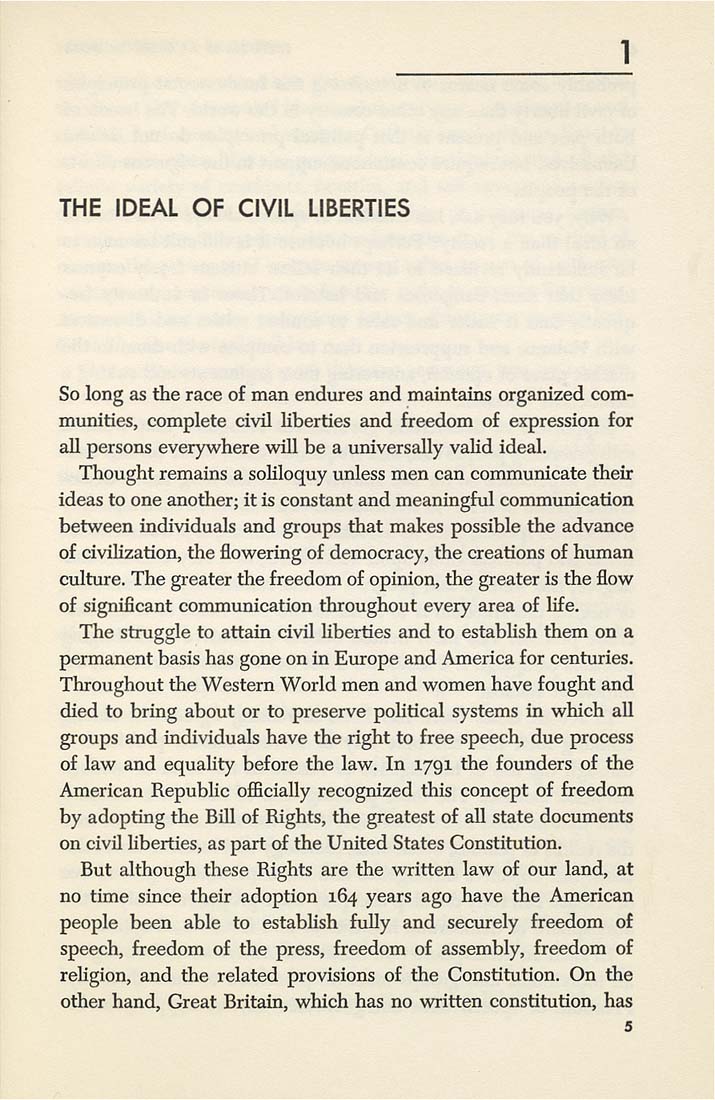THE IDEAL OF CIVIL LIBERTIES
So long as the race of man endures and maintains organized com¬
munities, complete civil hberties and freedom of expression for
all persons everywhere wiU be a universally vahd ideal.
Thought remains a sohloquy unless men can communicate their
ideas to one another; it is constant and meaningful communication
between individuals and groups that makes possible the advance
of civilization, the flowering of democracy, the creations of human
culture. The greater the freedom of opinion, the greater is the flow
of significant communication throughout every area of hfe.
The struggle to attain civil liberties and to establish them on a
permanent basis has gone on in Europe and America for centuries.
Throughout the Western World men and women have fought and
died to bring about or to preserve political systems in which all
groups and individuals have the right to free speech, due process
of law and equality before the law. In 1791 the founders of the
American Republic officially recognized this concept of freedom
by adopting the Bill of Rights, the greatest of aU state documents
on civfl liberties, as part of the United States Constitution.
But although these Rights are the written law of our land, at
no time since their adoption 164 years ago have the American
people been able to estabhsh fully and securely freedom of
speech, freedom of the press, freedom of assembly, freedom of
religion, and the related provisions of the Constitution. On the
other hand. Great Britain, which has no written constitution, has
5
|








